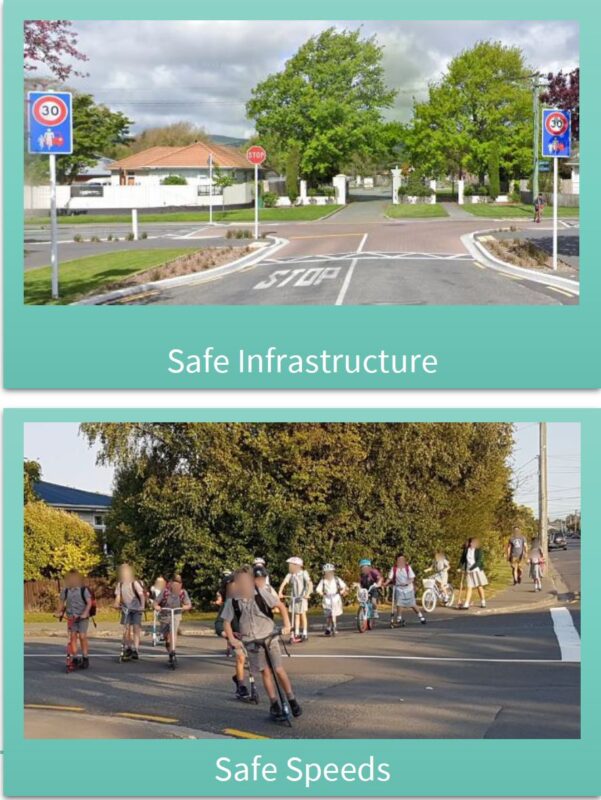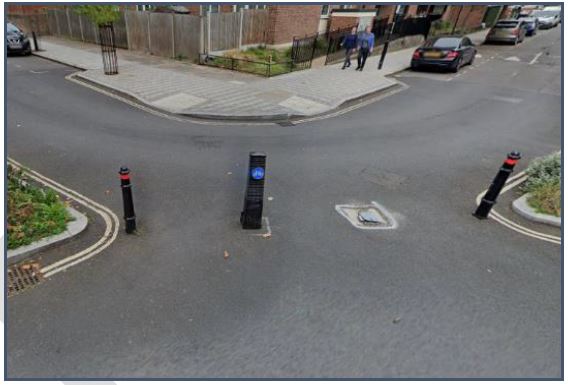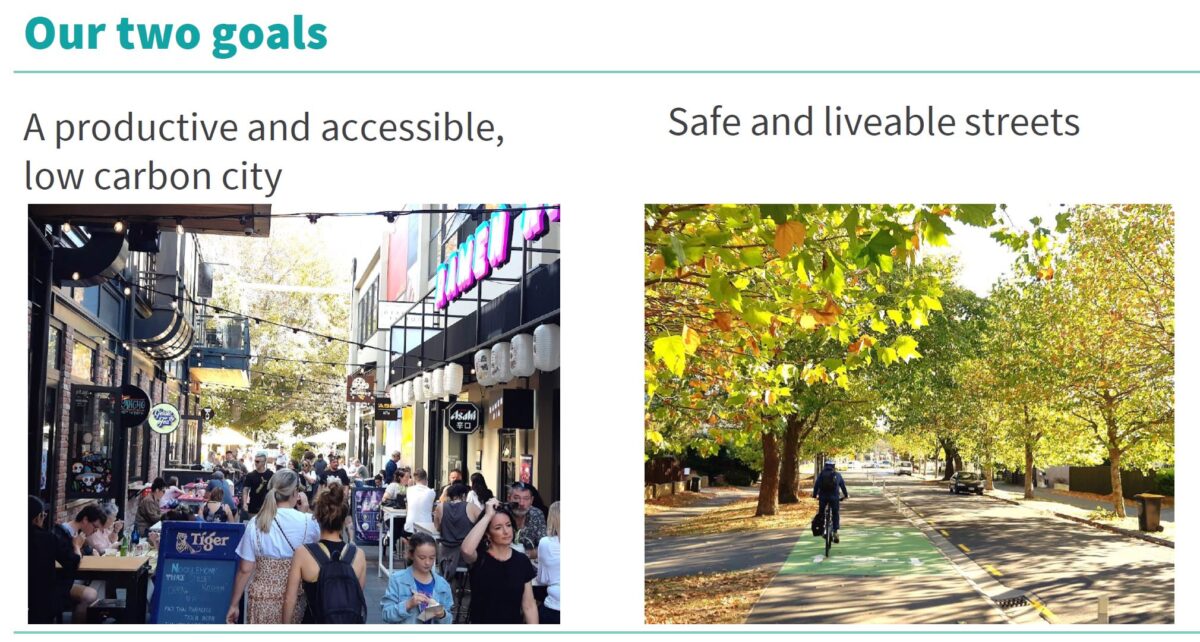It may have been an attempt at a political stunt but, whatever the motivations, the Christchurch City Council decided a couple of weeks ago to publish the draft version of its Christchurch Transport Plan currently in development. There was subsequently a lot of hype about its aim to “lure” people from their cars but, in reality its more about giving people better transport choices and also tilting the playing field so that driving is not always the default choice of mind.
So what’s in the Plan? This is a strategic vision for the city spanning 30 years, i.e. past 2050. In that time, there is the potential for a lot of harm to befall the city (and the country generally), both in terms of the impacts of climate change and unsustainable and unsafe motor traffic use. With that in mind, the Plan has two key goals:
- A productive and accessible low-carbon city
- Safe and liveable streets
Simple as that really; tackle climate change and tackle road safety. Fortunately cycling helps to tick the boxes for both goals. The Plan’s developers have also called on transport best practice from across the world as exemplars for how to deal to the most challenging problems.
Some of the cycling-specific actions in the Plan include:
 Plan and implement “Low Traffic Zones” across Christchurch, where streets are redesigned to prioritise walking and cycling
Plan and implement “Low Traffic Zones” across Christchurch, where streets are redesigned to prioritise walking and cycling- An ongoing, coordinated sustainable travel choice programme to increase the uptake of low emission travel options
- Improve the walking and cycling environment, including further major cycle routes, protected intersections, and neighbourhood greenways
- Focus on rolling out safer speeds across the city, particularly 30km/h limits around schools and key activity areas
For encouraging cycling, in a lot of cases it might be as simple as rolling out more “modal filters”, that restrict movement through them to only people walking, cycling and other micro-mobility modes – that way these groups get an advantage over cars in neighbourhood networks.

Other initiatives should also encourage greater take-up of options like cycling, such as greater use of parking pricing and lowering the priority of non-essential motor vehicle trips.
As the Council are at pains to say, this is not necessarily the final draft that will go out for full public consultation (probably in early 2023, with adoption by Council mid-2023). Nevertheless, it does shape up pretty well already if the aim is to address the twin scourges of carbon emissions and road safety.
What do you think of the draft Chch Transport Plan?




Yes – it’s not the controversy that some thought to create (expose?)… just simple well considered options that other cities have implemented with great success.
New Zealand is by some measures the second most car dependent nation on the planet – and Christchurch the most car dependent within New Zealand. Arguably that makes Christchurch one of the most car dependent cities anywhere. There is a lot of scope for nurturing alternatives – if other cities are less car dependent we could be too. With a whole host of benefits… reduced air pollution that causes illness and death, reduced noise pollution that also causes illness and stress. And on the positive – safer streets, more mobility for children and women, and a healthier more active population overall.
Reading through the whole report, I was getting tears in my eyes about possible solutions to climate change being discussed and with luck and the right people voted in who care about the city and planet we live on, a chance to get implemented.
I don’t have kids yet, but I hope that by the time that we do that a lot of these are implemented so they can grow up in a safe city where they don’t have to rely on their parents to take them everywhere in a plastic and metal box.